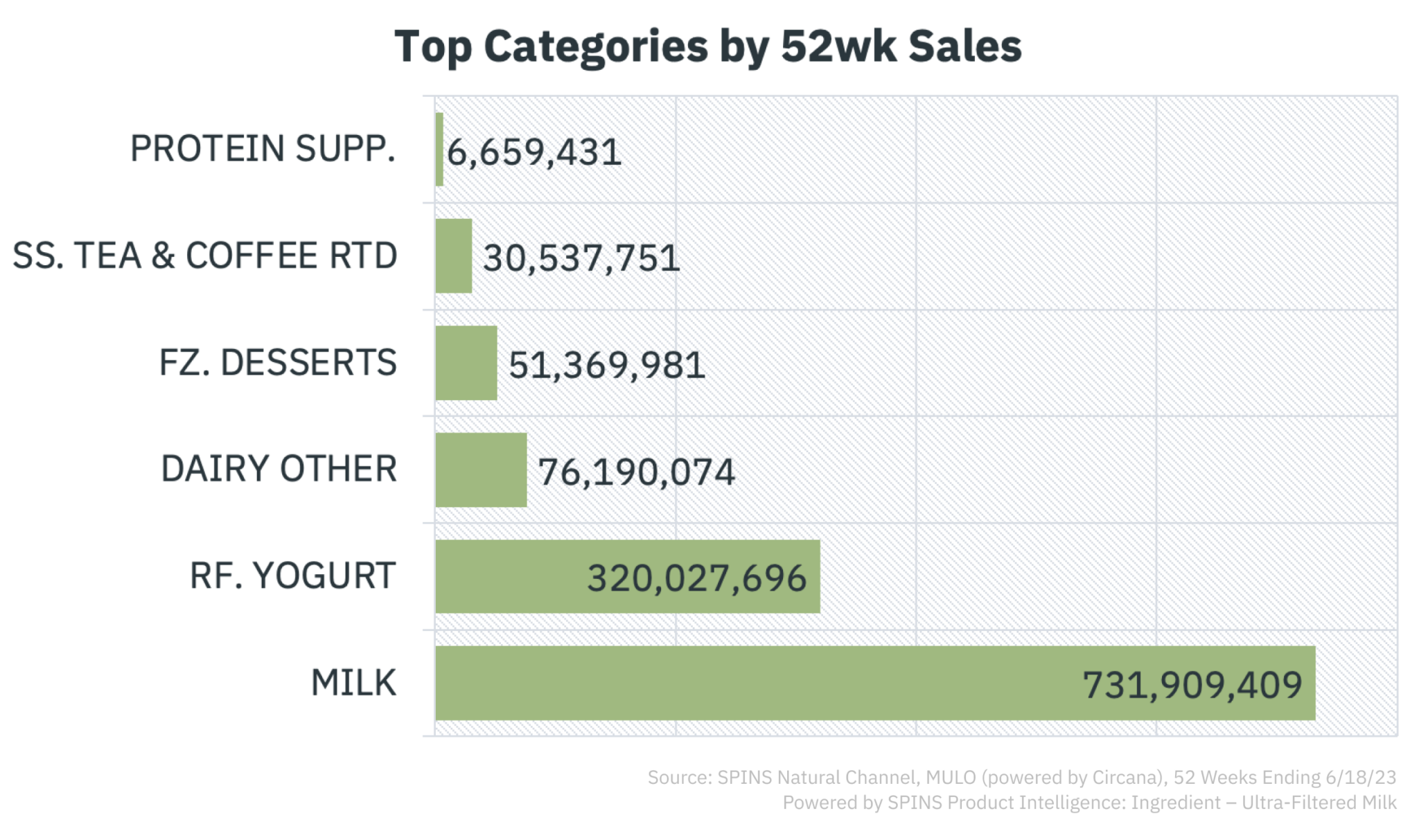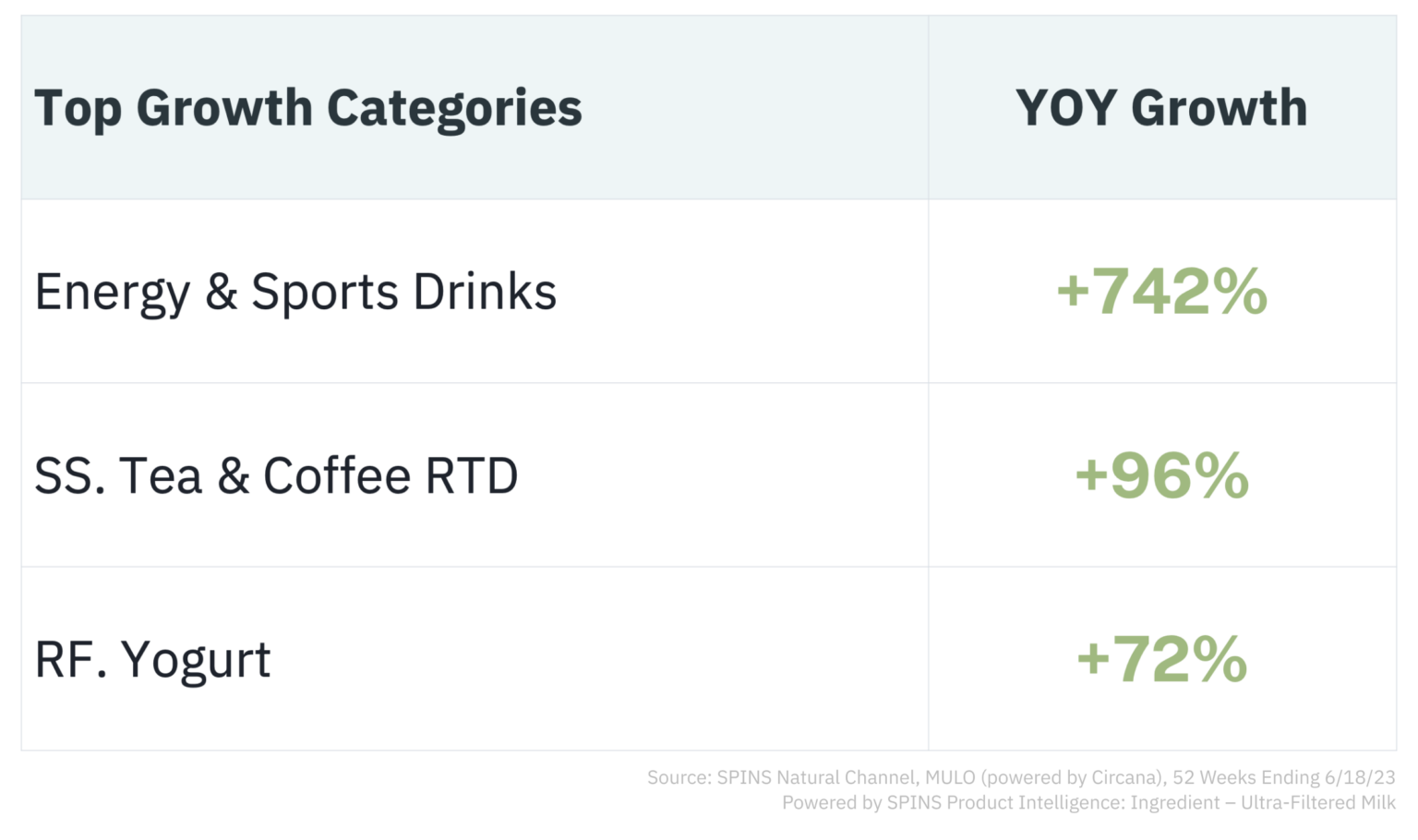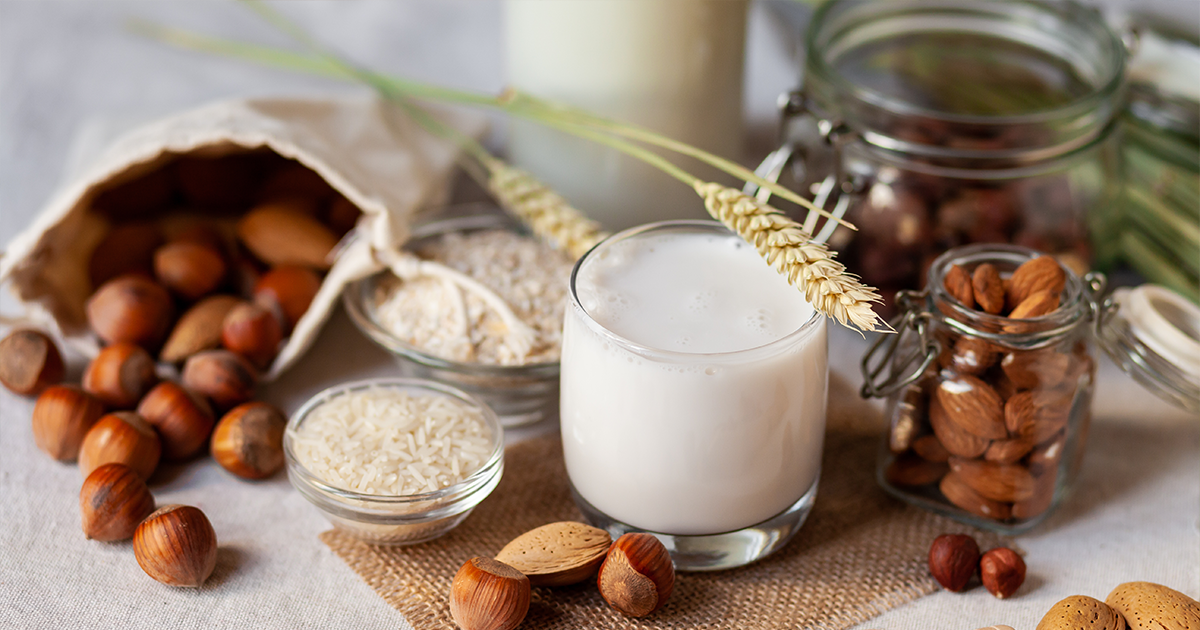Key Takeaways
- Ultra-filtered milk is an innovation in dairy processing that increases the nutritional value of milk
- Ultra-filtered milk drives meaningful differentiation across categories for health-focused shoppers
- Though UPCs with ultra-filtered milk number only in the hundreds, it already drives over $1B in annual sales
Introduction
Ultra-filtered (UF) milk is an exciting innovation in dairy processing that represents the values-oriented shopper’s appetite for products that are more nutritionally sound and the dairy industry rising to the occasion to meet their needs.
What is Ultra-Filtered Milk?
UF milk is raw or pasteurized milk that has been mechanically filtered through a membrane to concentrate proteins in milk. This means passing it through one or more filters to reduce the water and sugar content of the milk while still retaining proteins and fats. After the ultrafiltration process, nutrients can be further removed or added back in to reach a desired nutrient profile, frequently through a process called diafiltration—while they are not always the same, diafiltered milk can be considered a subset of UF milk.
It’s important to note that UF milk is in a league of its own compared to other commercially available filtered kinds of milk like micro- or fine-filtered. While micro- and fine-filtering both remove bacteria and other substances that may cause milk to spoil faster, UF milk does the same while concentrating additional proteins and other nutrients.
Why Ultra-Filtered Milk Matters
Once passed through the ultrafiltration membrane, UF milk provides several benefits including:
- Lower sugar
- Higher protein
- Higher calcium
- Often lactose-free
As values-oriented shoppers continue to pursue healthier products and closely inspect labels to find products that align with nutritional preferences, a small, but growing number of brands have begun using UF milk as a differentiator.
Though only a couple hundred UPCs are actively using UF milk in their ingredients, UF milk has already passed $1B in annual sales, growing at a rate of over 15% Year over Year (YoY)!

Source: SPINS Natural Channel, MULO (powered by Circana), 52 Weeks Ending 6/18/23 Powered by SPINS Product Intelligence: Ingredient – Ultra-Filtered Milk
While milk remains the leading category, strong investment in UF milk has yogurt building a sizeable share of this market showing a strong 72% YoY growth despite already being the second largest category of products leveraging UF milk.

Source: SPINS Natural Channel, MULO (powered by Circana), 52 Weeks Ending 6/18/23 Powered by SPINS Product Intelligence: Ingredient – Ultra-Filtered Milk
As we look at the data, what we see emerging when we look at the top categories is that UF milk is doing well, building market share, and growing in categories where shoppers go for nutrition and wellness solutions.
When reviewing the top growth categories, we’re similarly seeing emerging brands in sports drinks, ready-to-drink coffee, and yogurt taking full advantage of the kind of nutritional differentiation UF milk offers. Clearly, shoppers are responding well to that innovation.
Conclusion
UF milk continues a strong growth trajectory and reflects the intersection of technology’s alignment with shopper values. By doubling down on milk’s already strong nutritional profile, several innovative brands are catering to values-oriented shoppers interested in products with added benefits. While the attribute only applies to a couple of hundred products, its performance and benefits make it a corner of the market that is ripe for innovation.








